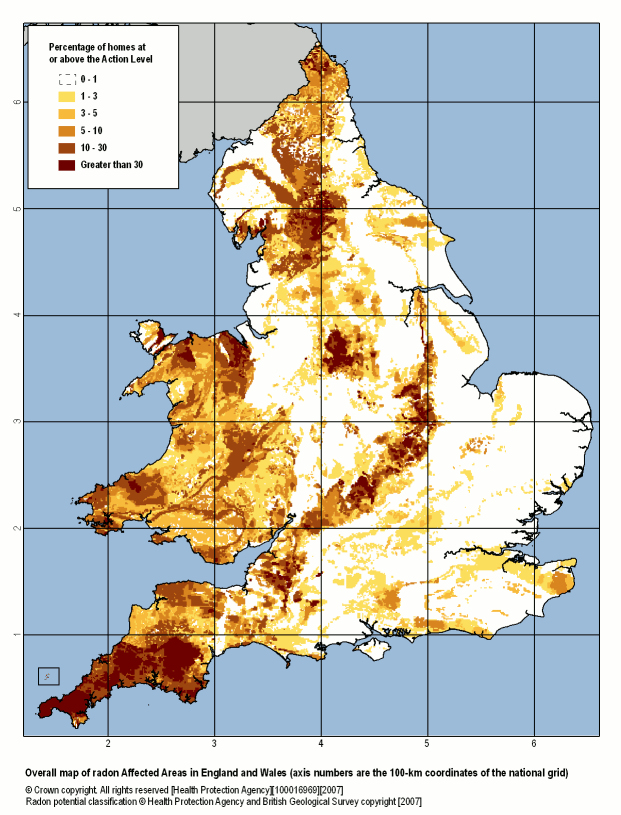Are You and Your Family at Risk from Radon?
Responsible for the deaths of more than 1,000 people every single year, radon gas is the silent killer that could be finding its way into your home every second of the day, and yet still so many people fail to recognise or understand the risks of this poisonous gas.
As radon testing and mitigation specialists, the guys at PropertECO know all there is to know about this deadly gas. Read on as they explain everything you need to know about what radon is and what you can do to stop it.
What is it?
Naturally occurring and emitting from the soil every second, radon gas is colourless, odourless, tasteless, but most importantly, radioactive. In fact, radon is the decay product of radium, itself the decay product of both thorium and uranium – the two most common radioactive elements on earth.
When radon starts to decay, it creates something called radon daughters – solids which stick to surfaces such as dust particles in the air – and if these are inhaled they stick inside of the lungs.
What are its effects?
When the radon affected particles are inhaled the risk of developing lung cancer increases. In fact, radon gas is the leading cause of the disease in non-smokers, and is the second biggest cause overall.
Unfortunately, symptoms of lung cancer do not often appear until the disease has progressed to the non-curable stage, while many more people misinterpret symptoms, delaying diagnosis. With this in mind, it is vital to tackle the presence of radon gas in your home in advance.
Is my home at risk?
The levels of radon vary throughout the country.

This map shows the areas in England and Wales that are most at risk from radon poisoning, however to be 100% sure of your home’s status it is worth investing in an inexpensive radon detector from a company like PropertECO.
The average radon level in UK homes is defined by Becquerels per cubic metre (Bq/m³), and currently it is 20Bq/m³. The actionable level – the level at which the Government Health Protection Agency recommends that action be taken – is 200Bq/m³, however a study conducted by S Darby, D Hill and R Doll in 2001 – titled ‘Radon: a likely carcinogen at all exposures’ – found that “around 90% of radon-induced deaths in the United Kingdom probably occur as a result of exposures to radon concentrations below the currently recommended action level of 200Bq/m³.”
What can I do?
There are a number of things homeowners can do to reduce the presence of radon in their homes. The most common reduction method is a radon sump, which represents the best way of reducing indoor radon levels. They are fitted with a fan and help to vent the radon gas out of the home, although passive sumps (those without a fan) can also work in homes where there are lower radon levels.
Positive ventilation is effective for homes where radon levels are up to 500Bq/m³, and are designed to dilute the radon levels by introducing fresh air into the home.
Sumps and positive ventilation are two methods of reducing radon levels in the air, however natural under-floor ventilation and active under-floor ventilation are both ways of reducing the radon before it has a chance to enter the room.
The former simply makes use of good ventilation within a suspended ground floor, while the latter requires a fan to continuously blow air into, or extract air from, the space below a suspended floor.
If you’d like to find out more about domestic radon or how to reduce it, visit the PropertECO homepage today.
This guest blog was written by John Rooney in partnership with PropertECO, one of the UK’s leading installers of radon reduction technology.
You can follow any responses to this entry through the RSS 2.0 feed. Both comments and pings are currently closed.
